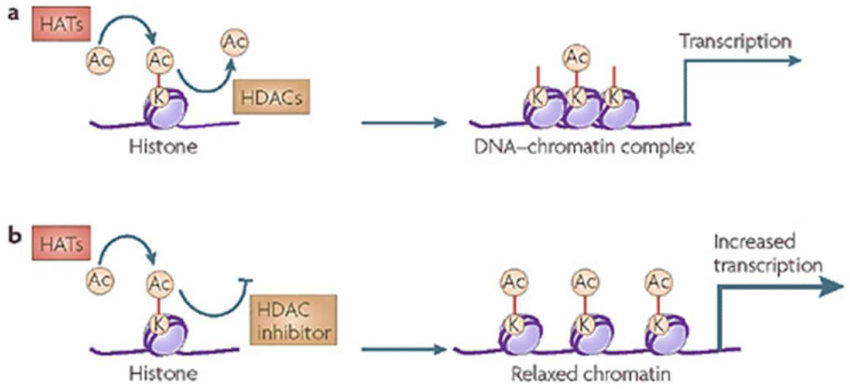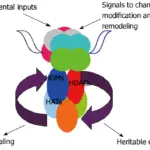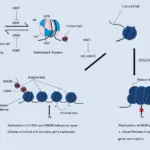Histone acetylation involves lysine residues incorporating within the N-terminal tail protruding from the histone core, which results in acetylation. Histone acetylation reduces the electrostatic affinity between histone proteins and DNA, and thus promotes a chromatin structure that is more permissive to gene transcription. Histone acetylation results in increased expression of the genes in the acetylated region.
What is Histone Acetylation?

Histone acetylation. Example of Histone Acetylation a. Levels of histone acetylation at specific lysine (K) residues are determined by concurrent reactions of acetylation (AC) and deacetylation, which are mediated by histone acetylases (HATs) and histone deacetylases (HDACs). This histone acetylation is vital for establishing the conformational structure of DNA-chromatin complexes, and subsequently transcriptional gene expression. b. By blocking the deacetylation reaction, HDAC inhibitors change the equilibrium of histone acetylation levels, leading to increased acetylation, chromatin modification to relax confirmation and transcription upregulation. Reprinted by permission from Macmillan Publishers Ltd: [Nat Rev Drug Discov] (Oct;7(10):854-68), copyright (2008). Not altered. CC.
Epigenetics in Breast and Prostate CancerYanyuan Wu, Marianna Sarkissyan, and Jaydutt V. Vadgama


